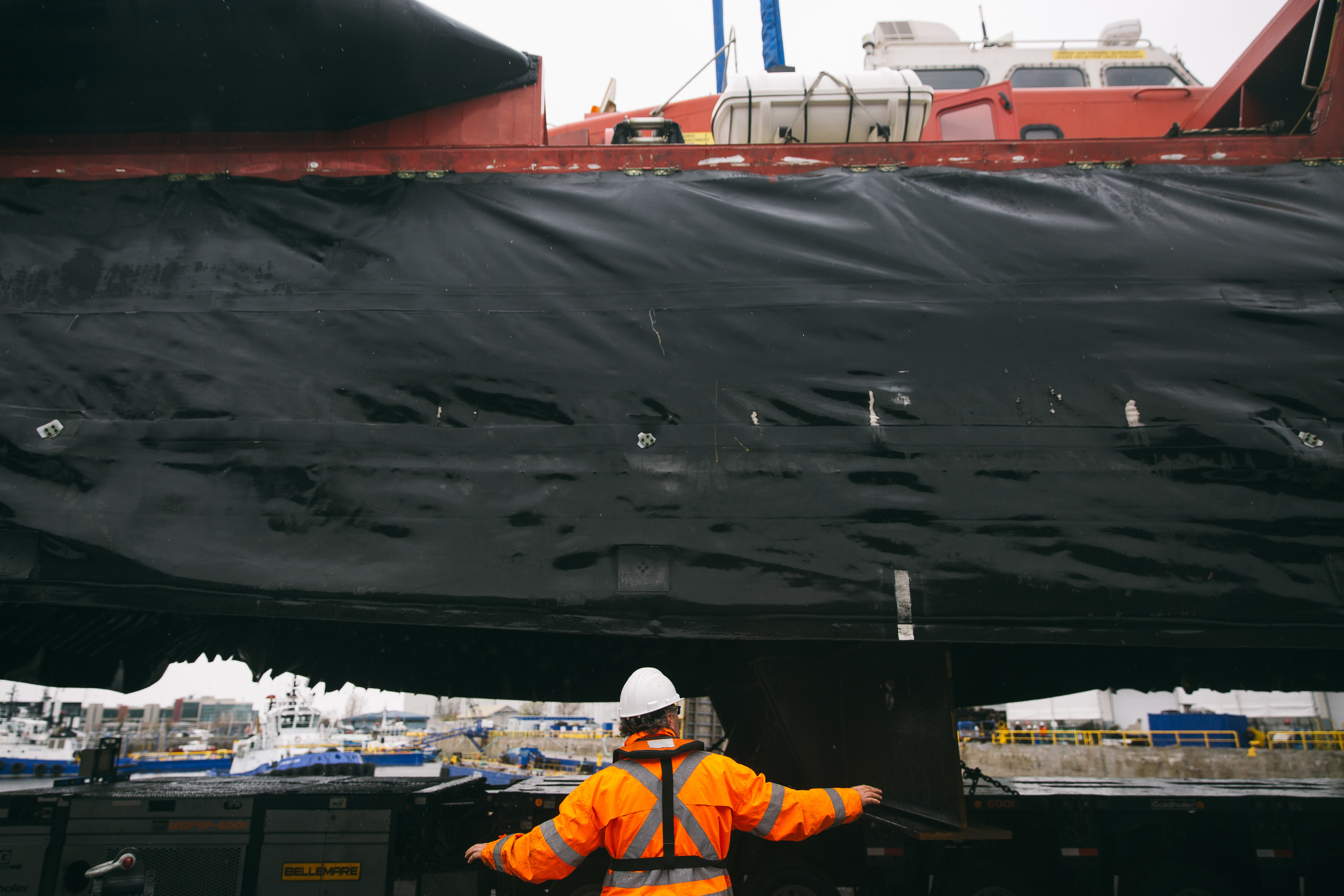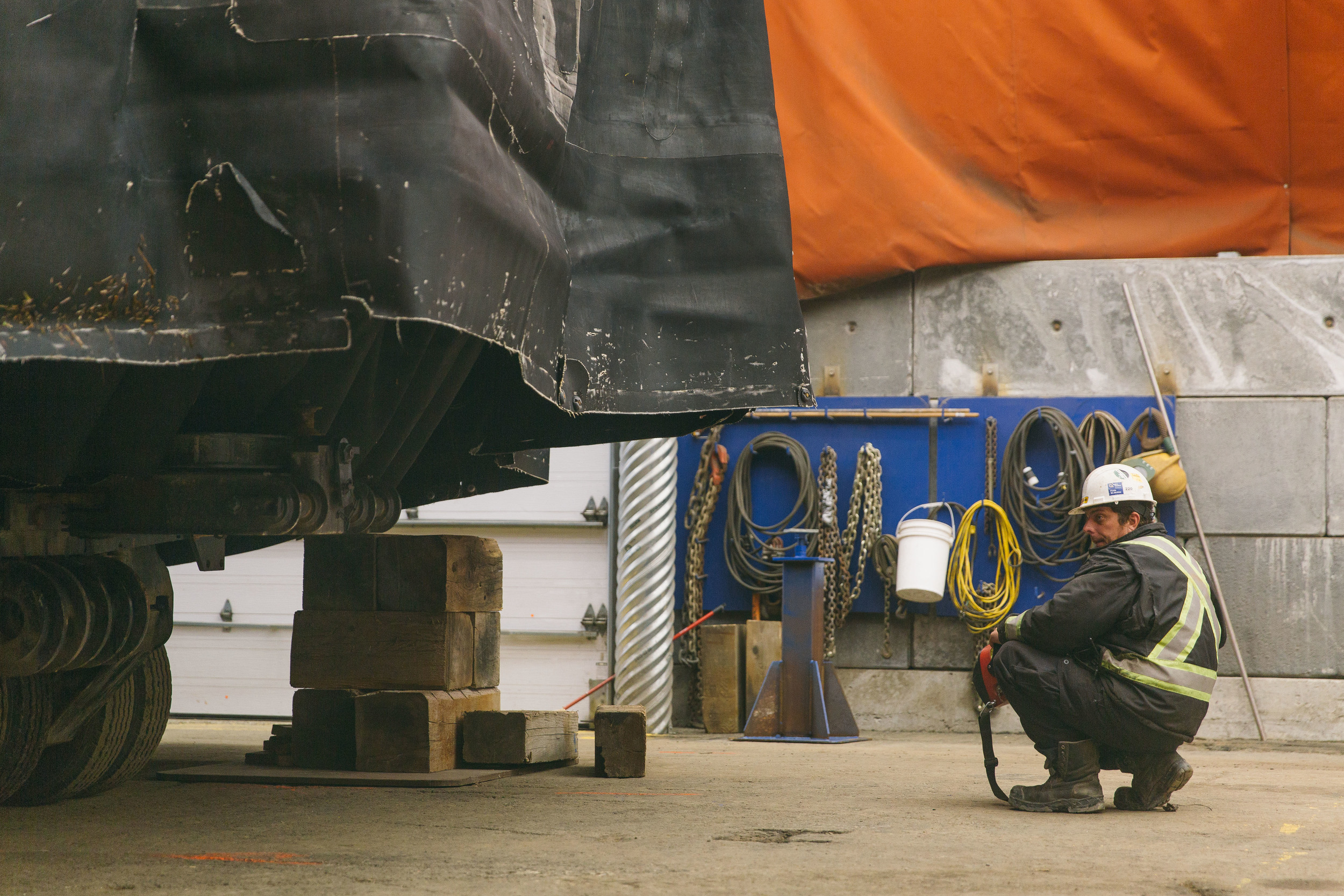Sometimes you get a call for a job that you never thought you would have the chance to do. Shooting the Sipu Muin was definitely one of those days. I felt the need to write something about this experience, and bring light to this amazing piece of machinery. I developed an interest in heavy machinery while growing up around the construction sites where my dad worked. Spending the day around this hovercraft made me feel like a kid again.
The Sipu Muin is operated by the Canadian Coast Guard, and is based in Trois-Rivières, QC. This particular craft is primarily used for ice breaking and search and rescue along the St. Lawrence River, and can operate in situations many other conventional ships cannot. It is capable of breaking up three square miles of ice per hour, and can operate in -40 degree conditions.
Four 23 litre diesel motors, producing a total of 2819kw (around 3780 hp) of power, are responsible for operating the propellors and creating the lift under the craft. Hovercrafts operate by blowing high pressure air underneath with lift fans, and the air is trapped by the skirt around the edge. This lift allows the craft to glide across the top of the water without any friction on the surface, unlike the hull of a conventional ship. The Sipu Muin has a top speed of 55 mph, and is extremely maneuvrable.
Océan Group Inc. is a tugboat manufacturer and shipyard in Québec City. They were going to be doing repairs to the hovercraft for the Coast Guard, meaning it would have to be taken out of the water and placed into one of their dry docks. We were there to document the workers as they carried out the operation.
Two cranes were brought in from Guay Inc. to lift the hovercraft onto the dock. The Océan and Guay teams worked together to complete this operation.
The hovercraft was to be placed on a long, remote-controlled truck bed. The workers placed two massive steel beams on the bed to be able to support the hovercraft.
On this mid-May day, it was snowing and 34 degrees (1 degree celsius). I was dressed in four layers, along with full safety gear. Strong winds were blowing down the St. Lawrence. I was constantly having to wipe the drops off my lens from the snow. These conditions made for very dramatic scenes for photos. These workers were not phased, as I am sure this was nothing compared to the tough winters they are used to.
As the Sipu Muin pulled up next to the dock, the workers began preparing the straps that would be used to lift the hovercraft from the water.
As soon as it was latched up, it was go time.
Once Sipu Muin was in place, I had the opportunity to go underneath the hovercraft while the crew was checking to make sure everything was in place properly. I never thought I would ever see the bottom of a hovercraft in my life, let alone be this close to one.
For the penultimate step, the robot truck bed would have to maneuver this massive, heavy machine into the covered dry dock area. There was one man controlling the bed with a remote control, and it was quite the sight to witness.
Once the craft was in place, the workers stacked wood blocks underneath the steel beams. The robotic truck bed then lowered with hydraulics in order to drop the Sipu Muin down onto wood blocks. I found it funny that after using all this big technology, the craft would be placed something as simple as wood. Finally, the bed began easing out from underneath the hovercraft, and the process was done.
I am grateful to have had this opportunity to experience such a breathtaking piece of machinery. Big thanks to Kevin Gill Wilson at New Nation Creation for asking me to do the photography for this project. Watching the rugged teams work was inspiring as well, as it is so far from what I do for a living. If you want to learn more about hovercrafts, I would highly recommend this documentary. You can even see this hovercraft in action around the 41:30 mark.






















